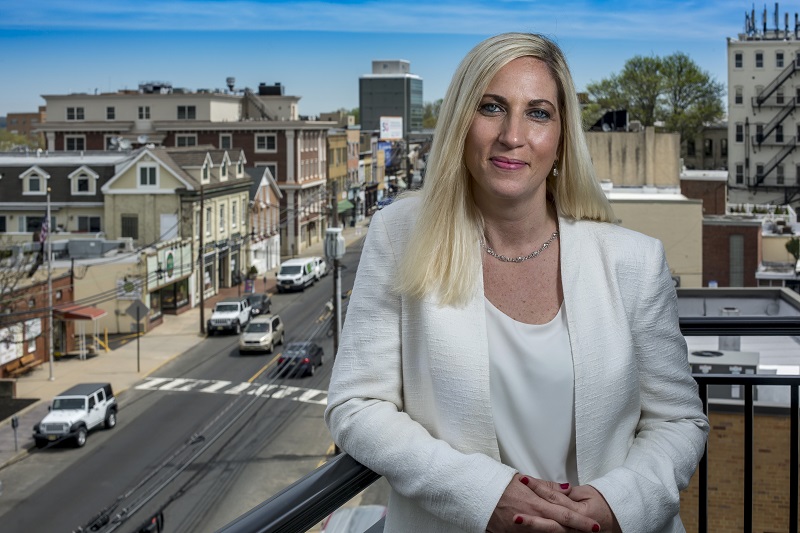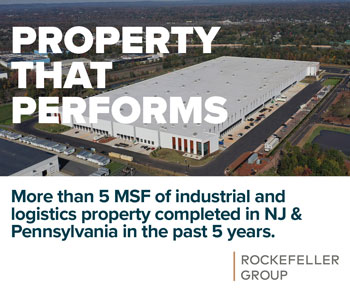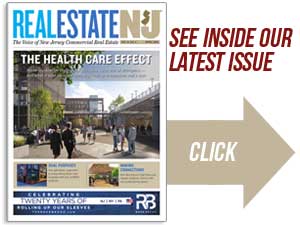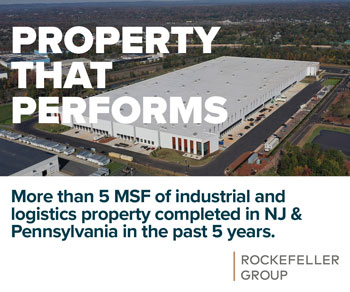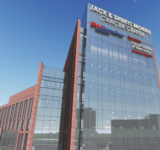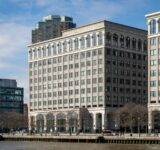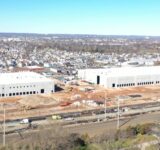Debra Tantleff, founding principal of Tantum Real Estate, is marking the opening of the Element, a new 35-unit luxury apartment building in downtown Red Bank. The project could be the first of many new developments in the popular Monmouth County borough. – Photo by Aaron Houston for Real Estate NJ
By Joshua Burd
It’s often mentioned in the same breath as Morristown and Montclair, but Red Bank has mostly lacked the type of new investment and mixed-use development seen by its northern counterparts.
Developers and other stakeholders believe that is soon to change.
The Monmouth County borough is now embracing redevelopment and smart growth concepts more than it has in recent memory, insiders say, as evidenced by the growing list of projects that are now under construction or in its pipeline. That embrace is a long time coming for developers that have seen all the community has to offer — from its popular downtown to the Navesink River waterfront, along with a rich cultural scene and an affluent population.
“I think it really speaks to the charm that is Red Bank, where there is something in this town for everyone,” said Debra Tantleff, the founding principal of Tantum Real Estate. “And I think the town is now much more open to embrace the opportunities that redevelopment can bring. I think it’s recognizing the need for diversity in product and price point.”
Tantleff would know. The developer is part of a joint venture that has just completed a 35-unit luxury apartment building at 55 West Front St., the downtown’s first new multifamily project in several years, at the former site of a vacant nursing home. The long-stalled plan moved forward in late 2016 after the borough council designated the site as an area in need of redevelopment under state law, a sign that local leaders were willing to tailor their zoning in support of the project.
It’s among several residential and commercial projects that have moved forward in recent years. Last fall, Denholtz Properties won planning board approval to expand a previously announced, mixed-use redevelopment directly next to Red Bank’s train station. The project is well underway, starting with the now-ongoing renovation of a roughly 30,000-square-foot office building on Chestnut Street that already houses Denholtz’s new headquarters.
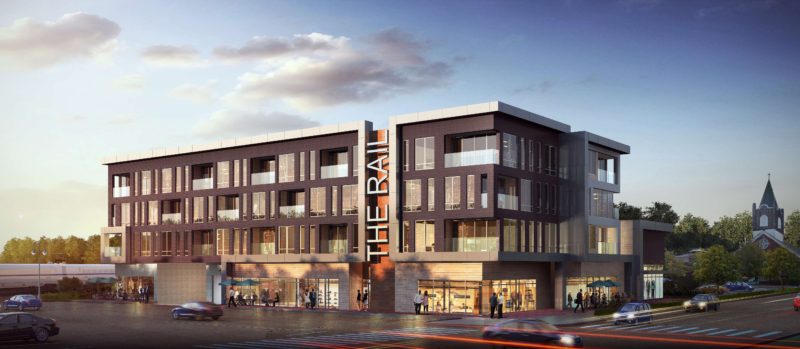
The developer, which relocated from Matawan, has also razed two shuttered restaurants on adjacent sites to make way for a ground-up apartment building known as The Rail @ Red Bank Station. Designed by Rotwein+Blake, the project will result in 57 luxury units and some 7,000 square feet of retail space, along with two stories of structured parking.
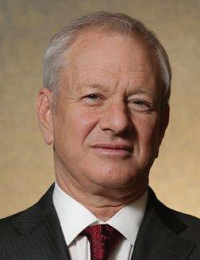
“There seems to be a vision now to allow for development consistent with what the town wants,” said Steven Denholtz, the firm’s CEO. To that end, The Rail has seemingly struck a chord with its low-rise design and the addition of parking within the project, addressing one of the borough’s longest-running challenges.
The firm has also secured approval for a 10-unit condominium project on the other side of the borough, overlooking the Navesink, as it pursues other opportunities within the 2.2-square-mile community. There is much to like, Denholtz said, citing cultural venues such as the Two River Theater and Count Basie Center for the Arts, plus a popular shopping and dining scene and a sizable daytime office population.
Ziad Shehady, the borough’s business administrator, said the municipality is now trying to take “a smart approach to redevelopment” that is more proactive than it has been in the past. Rather than reacting to unsolicited proposals, he said, local officials are now aiming to strategize with developers on projects that have “a balanced approach” to redevelopment in specific areas, one “that’s also not going to put an undue burden on our infrastructure.”
“Government tends to be very bureaucratic and … tends to not advance with the times,” said Shehady, who joined the borough last spring. “So I think there were some unique symptoms of that here in Red Bank, and then there were some that are common to other municipalities, but I think we’ve done a great job in the past year of really improving that.”

Consider that the municipality just recently created a redevelopment agency for the first time in its history, convening its first meeting in early May. Aside from sending the right message to the development community, the move is meant to help Red Bank achieve policy objectives such as expanding affordable housing and being environmentally conscious with any new projects.
“The intent of that is to be proactive with redevelopment and really professionalize it and make sure that whatever economic opportunities exist, you want to be able to maximize them,” Shehady said.
Developers say they are seeing signs of a more holistic approach. Saxum Real Estate, a Summit-firm, is hoping to build a luxury apartment complex at the site of a now-vacant, 35,000-square-foot office building at 175 Riverside Ave., which formerly housed the Visiting Nurse Association. Approvals are still pending for the project, which sits just south of a bridge over the Navesink, but will likely include an affordable housing component within its roughly 200 units.
The proposal is Saxum’s latest investment in Red Bank. The firm made its first foray in 2016, acquiring a historic former bank building at 55 Broad St., where it is marketing 24,000 square feet of high-end, renovated commercial space to boutique office users.
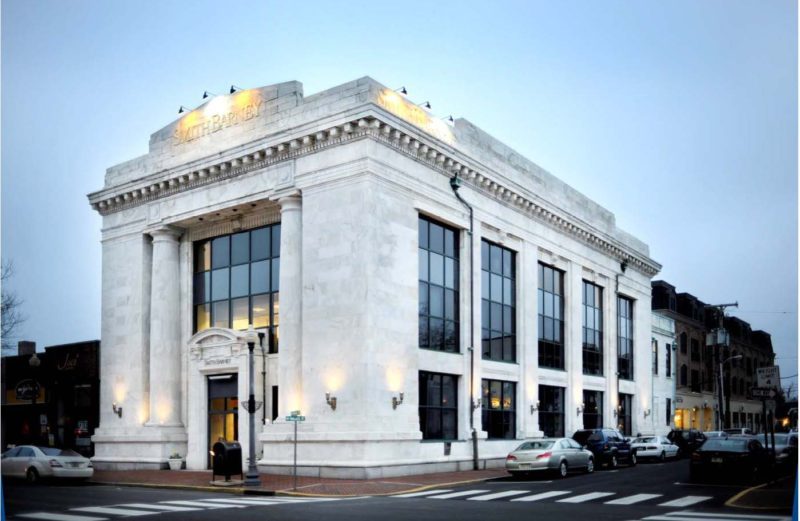
“A lot of the tenants that we’re talking to believe strongly in their ability to recruit and retain talent based on being in a wonderful, walkable downtown,” said Anthony Rinaldi, Saxum’s founder and managing principal. “So there are very few communities, in my mind, that are similar to Red Bank. I think it’s unique.”
The firm is also building out similar space at a two-story building at 2-10 Broad St., which will feature the type of exposed brick, exposed ceilings and hardwood floors often found in Manhattan’s SoHo neighborhood, Rinaldi said. The property is anchored by a ground-floor retail space occupied by Urban Outfitters, but its soon-to-be-upgraded office space is garnering interest from a diverse mix of industries — from financial services to creative to technology— highlighting what he said is the appeal of Red Bank’s commercial sector.
Building that daytime population will go hand in hand with growth on the residential side, he added, helping to bolster the borough’s well-known dining and shopping district.

“And I think none of the projects we’re talking about happen without a municipality that was focused on the future of its community,” Rinaldi said. “So I think extraordinarily highly of everybody we’ve dealt with in the town of Red Bank.
“As a developer, you run into all sorts of municipalities that have different opinions on development. Red Bank has been wonderful to work with while always keeping their interests in mind, which is obviously important for them, but understanding that development done well can have a very positive impact on their community.”
Tantleff believes her project, known as The Element, will appeal to baby boomers and empty-nesters who live in the area and now hope to downsize into a walkable, maintenance-free lifestyle. The size of the units reflects that belief: The property, also designed by Rotwein+Blake, offers several two-bedroom floorplans that are close to or more than 1,200 square feet in some cases, with oversized closets and large living rooms for entertaining.
Tantum was only able to achieve that design after several years of working with borough officials. The previous zoning did not reflect the market and would have kept the project from being financially viable, Tantleff said, but the borough’s zoning board rejected the plan in early 2016.
It’s why the developer saw the need to work with the town’s governing body “to ensure that they understood the opportunities available to them (under the state’s redevelopment law) and make sure that they were part of the process the entire way.” The breakthrough for the project came in November of that year, when the borough council designated the site as an area in need of redevelopment, allowing it establish the zoning that the project required.
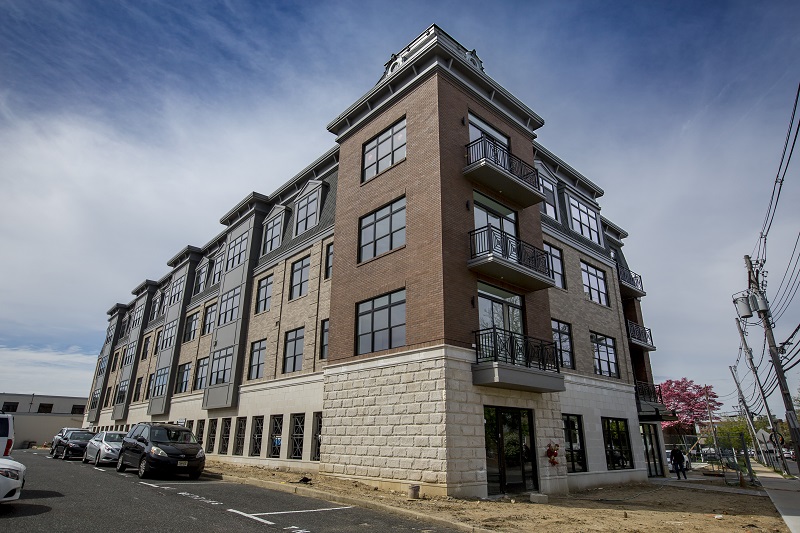
Tantleff conceded that the move was politically risky for the local officials who supported the designation, including Mayor Pasquale Menna, but believed they saw the project’s potential ripple effect on the downtown and on other projects.
“If you are of the mindset where you’re willing to revisit your zoning and be open to redevelopment as a tool, it creates extraordinary value in being able to unlock the potential of individual assets and individual sites,” she said. “I think this project is going to be a model for Red Bank of what can really come out of working with the development community, being creative and being open to redevelopment as a tool, but really being thoughtful about what the vision for that redevelopment is.”
Several other projects are underway in Red Bank, including Metrovation’s plan to repurpose a long-shuttered, 45,000-square-foot warehouse on Monmouth Street. Plans call for restoring the distinctive Anderson Moving & Storage Building to make way for Sickles Market Provisions, a gourmet food and garden destination, along with office space on the upper floors.
The development is the latest project for the locally based Metrovation, led by managing partner Chris Cole, which partnered with Woodmont Properties to open the West Side Lofts project on West Front Street in 2015.
Local officials are now focused on improving other aspects of the town, including parking, a perpetual concern for residents, planners and developers. The borough recently hired a full-time parking director, whose tasks include implementing the upgrades outlined by a third-party study commissioned last spring.
Those steps focus in part on improving technology and customer service, while finding ways to better utilize the borough’s existing stock of surface lots and garages.
The governing body also hopes to tackle other priorities with the help of its new redevelopment agency. Chief among them is the need to examine and potentially reconfigure facilities such as the municipal building, the senior center and the Department of Public Works, which are currently scattered throughout the borough.
“We want to look at those to see if we can come up with a better strategy for a municipal complex and use those existing properties for redevelopment,” Shehady said. “They are in prime locations in the downtown, so we can help with the tax base, we can add more economic opportunity by packaging these as part of a redevelopment plan.”
The borough has several other initiatives in mind, he said, all of which send a clear message to those looking to invest in the town.
“Red Bank is open for business — and it’s not just because we want to cater to business,” Shehady said. “We find that balanced development in the community is good for the residents. It’s good for real estate values, and in the statewide economy, we want to be a place where business can thrive.”
Developers, officials hail completion of key redevelopment project in Red Bank

